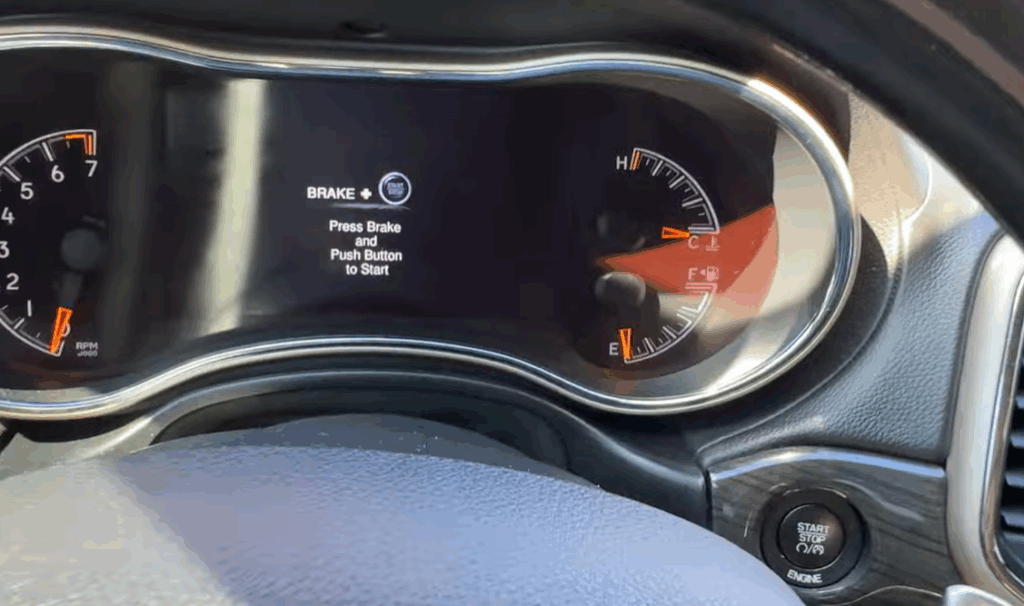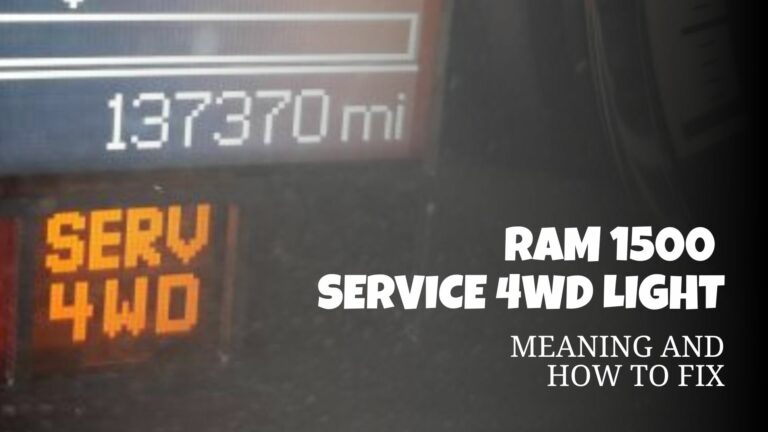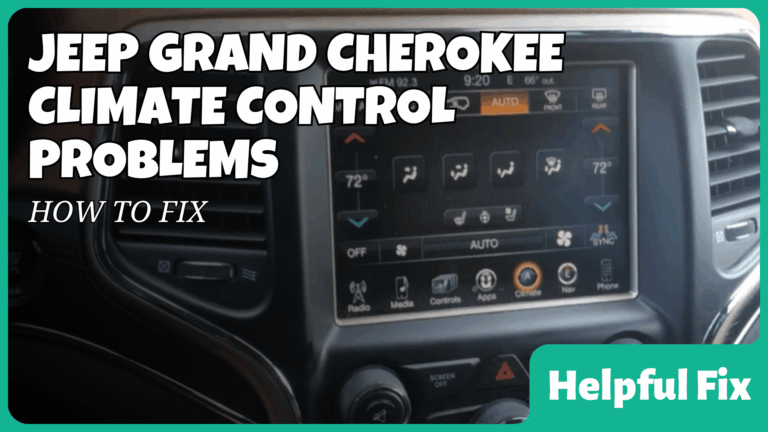Jeep Grand Cherokee Not Starting (How to Fix)
When a Jeep Grand Cherokee refuses to start, the issue is rarely a single mysterious fault. More often it is a cluster of electrical, fuel, or sensing problems that prevent the engine from catching. This comprehensive guide walks through the most common causes, how to diagnose them quickly, and the best fixes to get you back on the road. It draws on widely reported failure modes in the model range and provides practical, step-by-step actions you can perform with common tools.
Quick summary
- Check battery and terminal connections first. A dead or weak battery is the most frequent starting blocker.
- Test the charging system. An failing alternator can leave the battery drained and the engine unable to start.
- Inspect the starter and its wiring for corrosion or loose connections.
- Be aware of Totally Integrated Power Module (TIPM) related faults which can disrupt fuel pump control and starting in certain model years.
- Consider ignition switch problems, especially on older models with known recalls or wear issues.
- Test for a bad neutral safety switch if starting behavior changes with gear position or angle.
- Evaluate the fuel system including the fuel pump and related relays if there is no fuel pressure.
- Assess engine sensors such as crank and cam sensors and ignition coil packs that can prevent starting even when cranking occurs.
Battery and electrical system
- Inspect the battery first. A healthy, fully charged battery should read about 12.6 to 12.8 volts with the engine off. If the voltage is significantly lower, charge or replace the battery before pursuing other causes. A weak battery is the most common reason a Grand Cherokee won’t start.
- Examine battery terminals and cables. Look for corrosion, loose connections, or damaged cables. Clean corroded terminals with a baking soda solution, scrub until bright, and reseat the terminals firmly. Apply a thin layer of dielectric grease after reconnecting to prevent future corrosion.
- Check for parasitic drain. If the vehicle cranks slowly or not at all after sitting, there may be an excessive draw when the vehicle is off. Use a multimeter to measure the current draw and isolate circuits that stay energized when they should be off.
- Test the charging system. With the engine running, measure the voltage at the battery terminals. It should sit between 13.8 and 14.4 volts. If the voltage is low or zero, the alternator or its wiring may be failing and should be diagnosed or replaced.
- Listen for symptoms of a failing alternator such as unusual whining sounds, burning smells, or smoke. These are clear signs the charging system is compromised and can lead to a no-start condition if the battery can no longer hold a charge.
Starter and connections
- When you turn the key, listen for a distinct click or the absence of any sound. A rapid click usually points to battery or connection problems, while no sound can indicate a faulty starter or a larger electrical issue.
- Inspect the starter wiring and the solenoid connections for loose or corroded terminals. Clean or replace corroded connectors and ensure the wiring harness is intact without frayed insulation.
- Try a bench test or direct power test of the starter if you have the tools. This verifies whether the starter receives adequate current and responds properly to the solenoid activation.
- Check relevant fuses and fusible links associated with the starting circuit. A blown fuse can mimic a dead battery by cutting power to the starter circuit.
Ignition switch and ignition system
- Ignition switch wear can cause loss of power to essential systems and prevent starting. On older Grand Cherokees, ignition switch malfunctions have been a recurrent problem area.
- If the vehicle experiences power loss at random times or when turning the key, inspect the ignition switch for wear or loose contacts. Consider consulting a service bulletin or dealer guidance for recalls or known issues.
- Inspect the ignition system components such as spark plugs and ignition coils. Worn plugs or faulty coil packs can fail to produce a spark, leading to cranking without starting.
- If you suspect an ignition switch issue but cannot confirm through basic tests, consider a professional diagnostic that includes power and ground tracing through the switch assembly.

TIPM and related module issues
- The Totally Integrated Power Module (TIPM) is a centralized control unit that handles many functions, including the fuel pump, relays, and cranking. Faults here can cause stalling or a no-start condition even if the battery is fine. For many Grand Cherokee versions, TIPM failures have been a root cause of starting problems.
- Visual inspections of TIPM connectors for corrosion or signs of water intrusion are essential. Faulty, dirty, or loose connectors can disrupt multiple circuits and prevent starting.
- Use an OBD-II scanner to look for TIPM-related fault codes. If codes point to fuel pump control or related relay circuits, a TIPM fault is a likely culprit and may require module repair or replacement.
- When diagnosed as a TIPM issue, interventions range from connector reseating and cleaning to professional repair, module reflash, or replacement. Do not assume TIPM faults are purely software related; hardware faults are common on affected model years.
Fuel delivery and fuel pump system
- Verify fuel pressure at the rail with a fuel pressure gauge. No-start with cranking but no fuel pressure points to a fuel delivery problem rather than an ignition issue.
- Check the fuel pump relay and related circuits. Some model years experience fuel pump relay faults within TIPM which can stop fuel delivery mid-crank. If relay contacts fail, the engine will crank without starting.
- Inspect the fuel filter for clogging and replace if necessary. A restricted fuel supply can prevent the engine from reaching the necessary air-fuel mixture for ignition.
- Confirm the integrity of fuses and wiring to the fuel pump and fuel pump controller. Damaged wiring or blown fuses can stop fuel flow even if the pump is working.
Transmission range switch and neutral safety switch
- If the Grand Cherokee starts in Neutral but not in Park, the transmission range switch or neutral safety switch is likely at fault. This switch prevents crank initiation unless the transmission is in a safe starting position.
- Test by attempting to start in Neutral and in Park. If starting only in Neutral, inspect the transmission range switch for wear, misadjustment, or poor electrical contact.
- Replace or adjust the switch as required. In many cases, a faulty switch is resolvable and avoids more extensive electrical repairs.
Engine sensors and ignition components
- Crankshaft and camshaft position sensors are critical to synchronizing ignition timing. A faulty sensor can cause a crank without a start or no-start condition despite proper battery voltage and fuel.
- Inspect high-energy ignition components such as the coil pack. A weak or intermittent coil can fail to deliver a spark, preventing ignition even when the engine is cranking.
- Use diagnostic scans to identify misfire or sensor fault codes. If a sensor is failing, the engine may crank without starting until the faulty sensor is replaced or repaired.
Fuse box and wiring harness integrity
- Inspect major wiring harnesses for signs of abrasion, corrosion, or heat damage. Damaged wiring can interrupt essential circuits for starting and engine management.
- Check the vehicle’s fuse box for blown fuses or melted relays. Replacing a fuse or relay can resolve startup issues caused by a transient electrical fault.
- Address any water intrusion or moisture in the fuse box area, which is a known risk in some Grand Cherokee configurations and can lead to intermittent starting or electrical failures.
Intermittent starting problems
- Some Grand Cherokees exhibit intermittent no-start conditions due to mixed signals from multiple controllers or flaky connectors. Systematic testing helps isolate the culprit rather than guessing at multiple components.
- Document symptoms including when the vehicle starts, how long it cranks, and whether there are warning lights. A clear pattern simplifies diagnosis and reduces unnecessary part replacement.
- Start with the simplest fixes first: battery connections, fuses, and known fault areas like the TIPM and neutral safety switch before moving to more involved repairs.
Frequently Asked Questions
What is the most common cause of a no-start Grand Cherokee?
A dead or weak battery is the most common cause. A battery that cannot hold a charge or fails to deliver sufficient current will prevent the engine from cranking or starting.
How do I test the battery and alternator?
Test battery voltage with the engine off (about 12.6V is healthy). With the engine running, voltage should read 13.8–14.4V, indicating the alternator is charging. If those numbers are off, inspect or replace the battery or alternator as needed.
What is TIPM and why does it cause starting problems?
The Totally Integrated Power Module controls many functions including fuel delivery and starting. Faults in TIPM can stop the engine from starting or cause stalling. Diagnosing TIPM requires checking for related fault codes and inspecting connectors for corrosion or water intrusion.
Is there a known ignition switch issue I should check?
Yes. Older Grand Cherokees, particularly 2005–2007 models, have been affected by ignition switch wear and recalls. A failing switch can cut power to essential systems and prevent starting. Check service bulletins and recalls and replace if indicated.
Can the neutral safety switch cause a no-start condition?
Yes. If the vehicle only starts in Neutral or refuses to start in Park, the neutral safety switch or transmission range switch is a likely culprit. Replacing or adjusting the switch often resolves the issue.
Could sensor problems cause the engine to crank but not start?
Absolutely. Faulty crank or cam sensors can prevent the proper timing and fuel ignition, causing a crank without start. Ignition coil pack faults can also stop spark, leaving the engine unable to start.
How can I differentiate a fuel issue from an electrical issue?
Check for fuel pressure while cranking. If there is no fuel pressure, focus on the fuel system and TIPM relays. If fuel pressure is present but there is no spark, focus on ignition components and sensors.
What about known model year patterns I should be aware of?
Model years around the early 2010s show particular trouble with TIPM and nested relay circuits, while 2011–2013 models are flagged for fuel pump relay concerns within TIPM. Earlier years show ignition switch wear and recall activity that may affect starting. Always check for recalls and service notices relevant to your VIN before undertaking repairs.







